For years, the Fenton Art Glass Company was known for its colorful and dramatic handmade glassware. One of their signature styles and best sellers was hobnail glass, which is recognized for its bumpy texture.
Not all hobnail glass is produced by Fenton, as other companies have reproduced the look. The Fenton Art Glass Company made hobnail glass pieces popular in the 1800s, and they are relatively collectible today. Fenton hobnail pieces are typically valued under $100—rare items can be worth thousands.
Whether you are interested in purchasing, collecting, or selling Fenton hobnail glass, it is important to know the history and trademarks of the company.
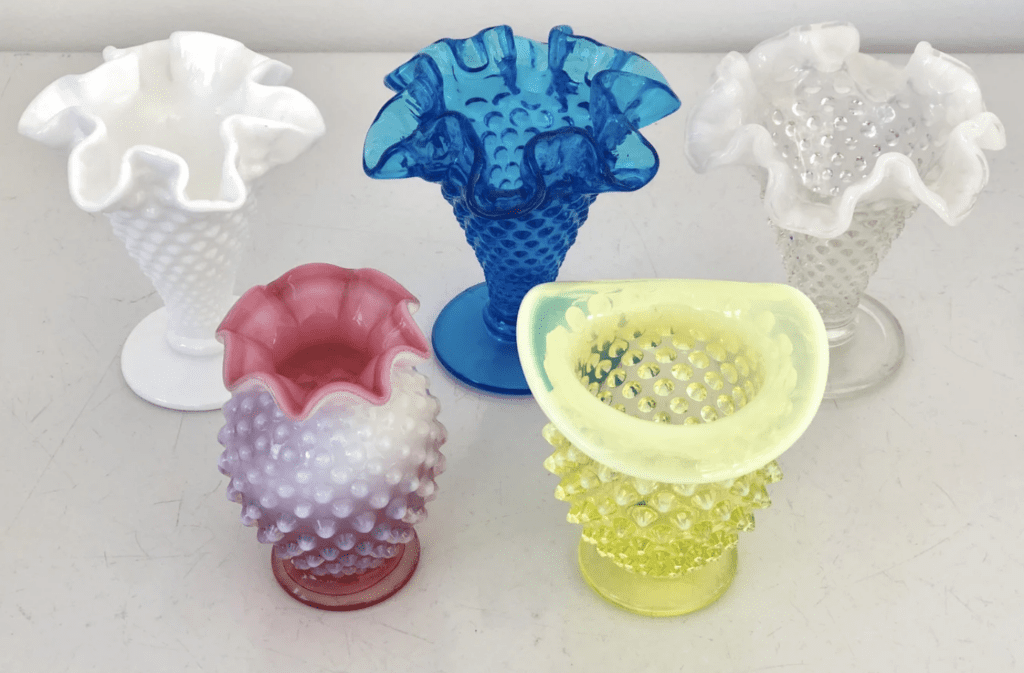
What Is Fenton Hobnail Glass/What Is Hobnail Pattern?
Fenton Art Glass Company was the West Virginian glass company that made hobnail glass popular in the late 1800s. The color that was most popular in the hobnail pattern was milk glass, which is named for its opaque, milky color. In 1935, the company made a lamp in the hobnail pattern and later began making goblets, tumblers, and vases in this same style.

This same style was used in the Victorian era but went by the term “dewdrop glass”. Later on, someone thought that the protrusions on the glass looked like the hobnails used in shoemaking. Hobnails are short nails with a large head that were used in the soles of work boots to make them durable and give them grip on icy or slippery surfaces.
The hobnail pattern is classified by round glass blobs arranged on the outside of the glassware. This gives the piece a pebbly, bumpy texture that looks beautiful and makes slippery glass easier to grip.
Is All Hobnail Fenton?
Not all hobnail glass is made by the Fenton Art Glass Company. Many renditions of this style have been produced since the original hobnail pieces were made back in 1939.
In fact, if you search “hobnail glassware” on the internet, you will see that you can buy hobnail cups, dishes, and vases from large retailers like Amazon, Wayfair, and Walmart. These pieces are mass-produced and made to mimic the original hobnail glass pattern. The style has become popular recently as decor to create a “farmhouse” look.
Fenton closed up shop in 2011, selling their glass molds to another glassmaking company in West Virginia. While these pieces carry almost every trademark of a Fenton piece, they no longer carry the Fenton brand name.
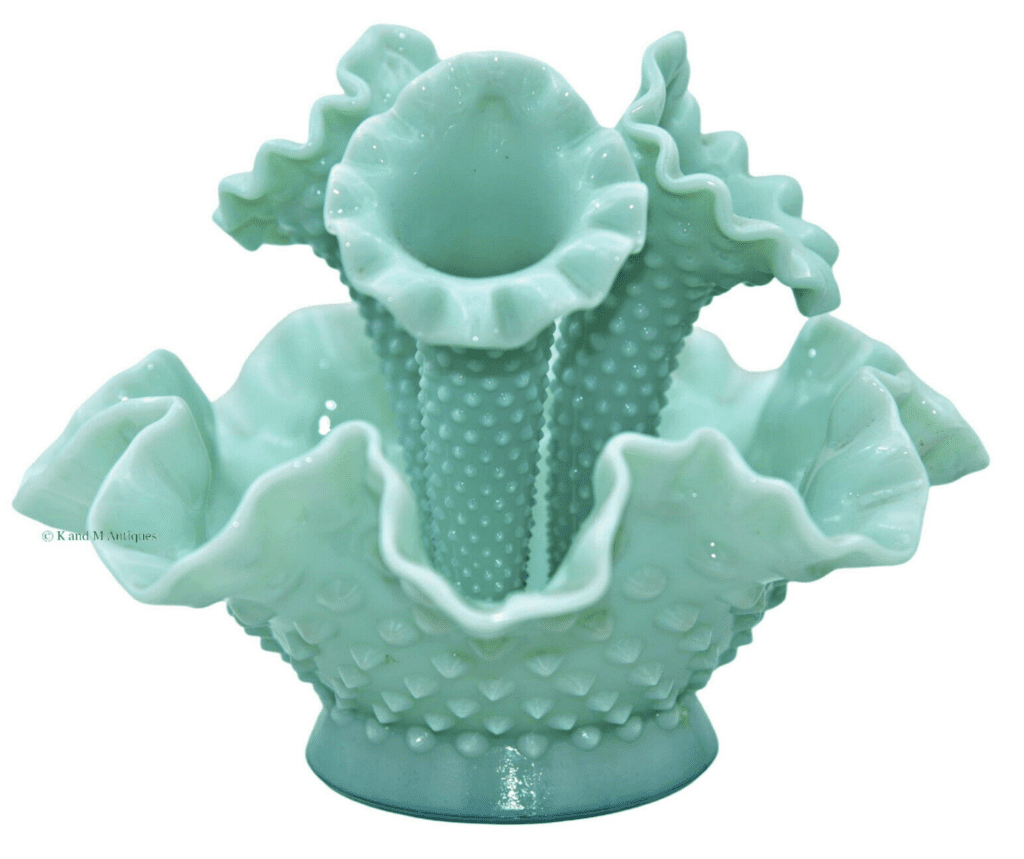
When Was Hobnail Glass Invented?
Hobnail glass was inspired by the Victorian “dewdrop glass” which has a very similar look. Lemonade sets that came with a pitcher and glasses were popular in a translucent style. Dewdrop glass has a slightly different appearance because it isn’t made in the same way as hobnail glass.
An artist at Hobbs Brockunier and Co. is thought to have first designed the pattern by pressing glass into a mold that had hobnails arranged in a pattern on it. Fenton produced a hobnail glass piece in 1939 that was a perfume bottle, first in translucent colors, and later in the milk glass color.
How Is Fenton Hobnail Made?
Glassmaking is a very intricate process that requires multiple steps. Fenton Hobnail glass was not mass-produced by a machine, but rather handcrafted by skilled glassmakers.
First, small rolls of glass are heated until they are soft and pliable. Then, a small blob of melted glass called a “bud” is attached to the end of a blowpipe. The glassmaker shapes the bud and blows a small amount of air into it. Then it is dipped into a furnace and given a layer of glass that will give the piece its finish whether opalescent or translucent.
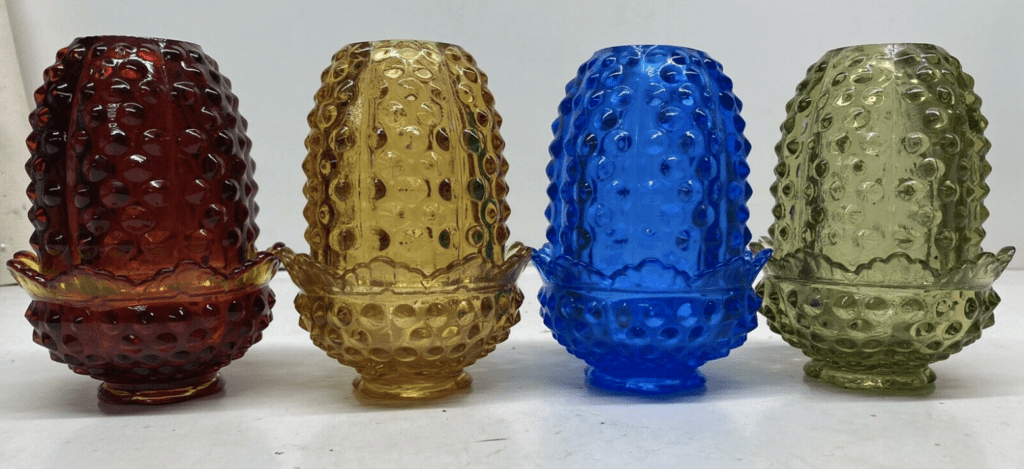
The glassmaker continues to shape the glass by twirling it in a mold, and then they blow even more air into it. Finally, the glass is placed into a mold that gives the piece the hobnail indentations. The glassware is cooled and shaped into its final shape. The final touches are put on, like handles or crimped edges.
How Are the Patterns Made?
The pattern on hobnail glass is very distinct with raised spheres arranged in a pattern on the surface of the glass. This pattern is made by placing the glass item into a special mold while the glass is still hot, and then the glassmaker blows air into the molten glass so that the glass takes the shape of the mold. Other types of patterns can be made with this same technique with different molds.

There are numerous ways to create patterns and textures in blown glass. Sometimes the blown glass is rolled on a steel table with indentations that transfer a design onto the product. Glassware with stripes is made by heading up small amounts of glass and laying them over the surface of the item to create a design.
How Can You Tell Fenton Hobnail?
The easiest way to tell if hobnail glassware is authentic Fenton is by the label. Glassware made by Fenton since 1973 is marked with an egg-shaped logo that was molded directly onto the glass. Glassware made before 1973 was labeled with sticker tags which often came off with time.
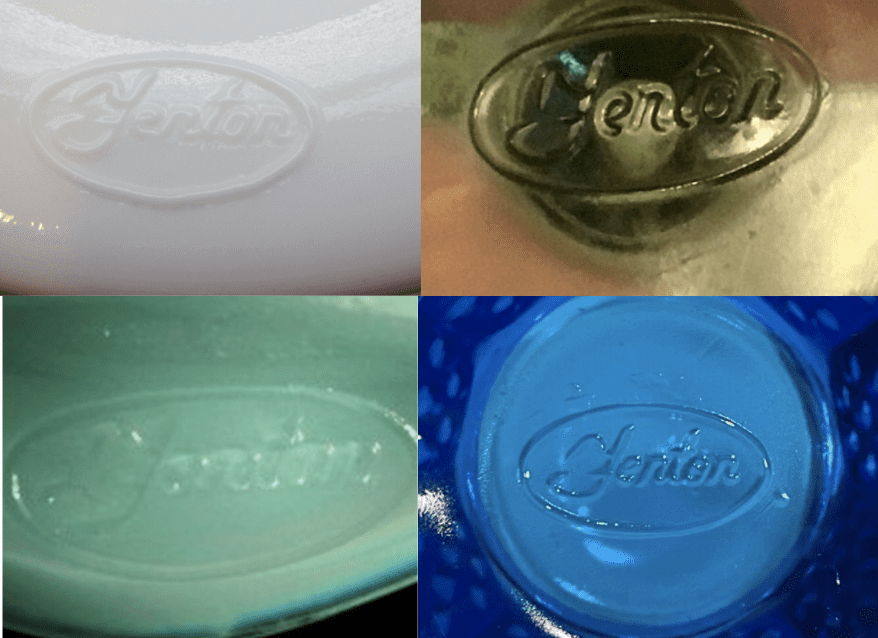
Note that in 1980, Fenton began to stamp a small number 8 below the name “Fenton” and in 1990, a small number 9, and in 2000, a small 0. This will also help you determine when the piece was produced.
How Do You Know If Hobnail Is Fenton?
If you aren’t able to find the Fenton logo anywhere on the item, you will have to look for other details that indicate the Fenton name brand. Fenton pieces were all hand-blown and of high quality. This means that a true Fenton piece will not have bumps, air bubbles, or seams.
Fenton has issued glass guide books that identify many of the pieces they produced. Information about limited runs, the year of production, and the color varieties available can be found in these guides. Other guides can also be found online that include expert opinions and advice. A trademark of Fenton glassware is a crimped edge that gives the piece a ruffled look. Any hobnail piece with this ruffling is likely Fenton.
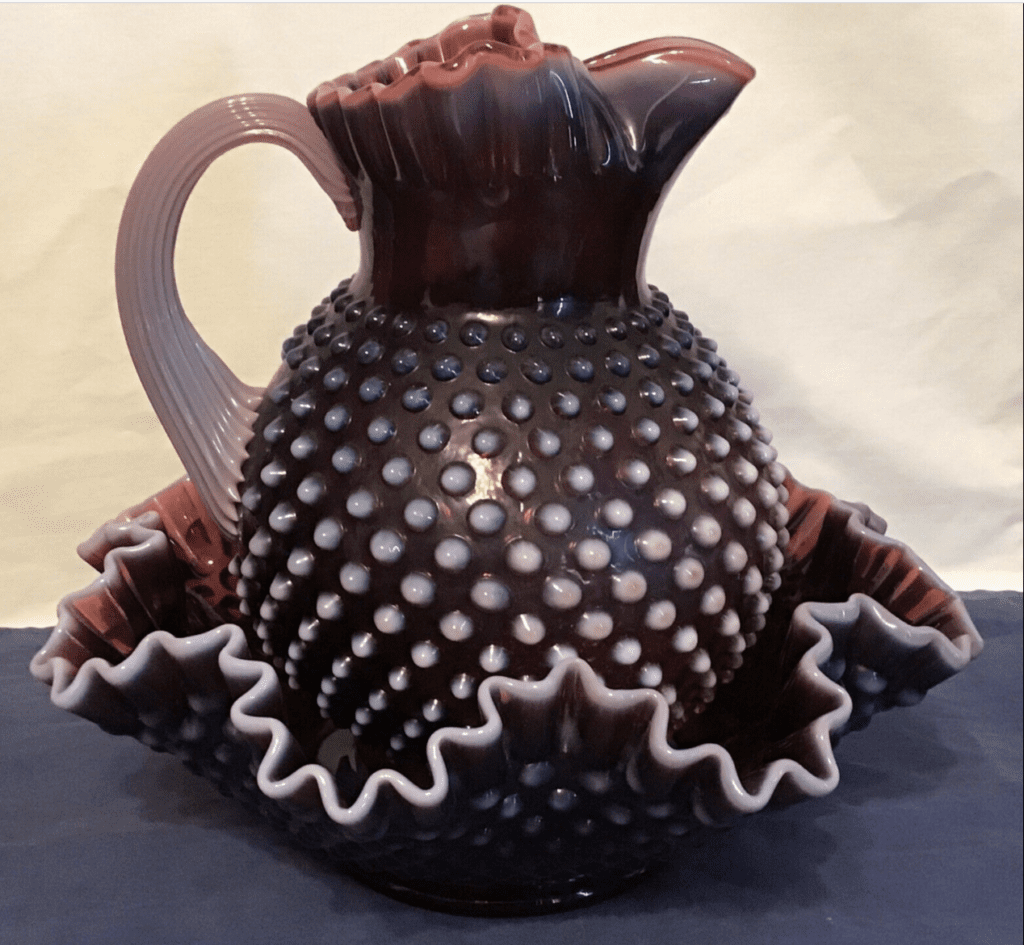
Is Hobnail Glass Valuable/Is Hobnail Glass Worth Anything?
To determine the value of a Hobnail Glass piece, research must be done to determine the rarity of the item. Some rare carnival glass and cranberry glass pieces can sell for thousands of dollars, but most Fenton pieces are worth less than $100.
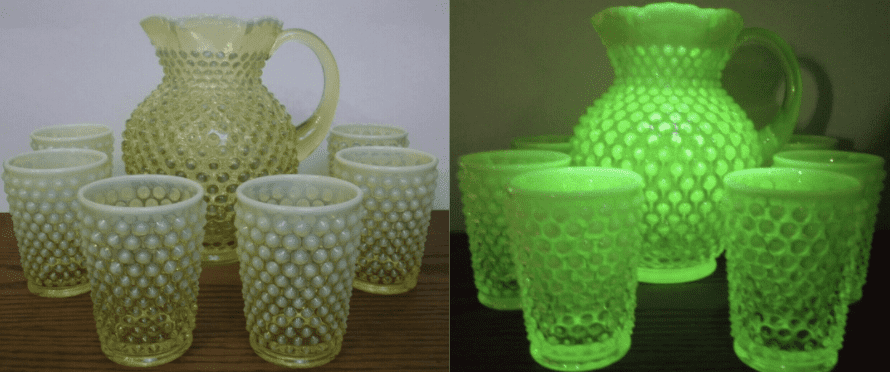
The older the item is, the more it will be worth. The opalescent and iridescent finish on certain items can also increase their value. Unique glassware items or items that were produced on limited runs will be worth more as well.

